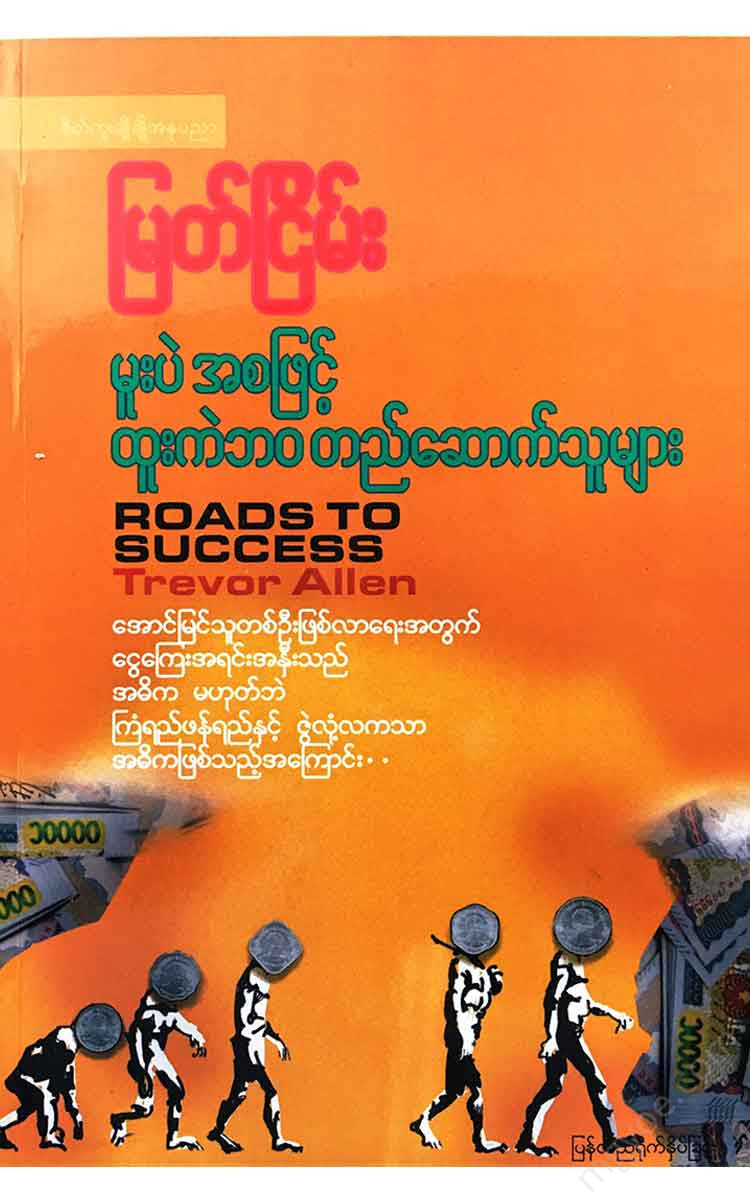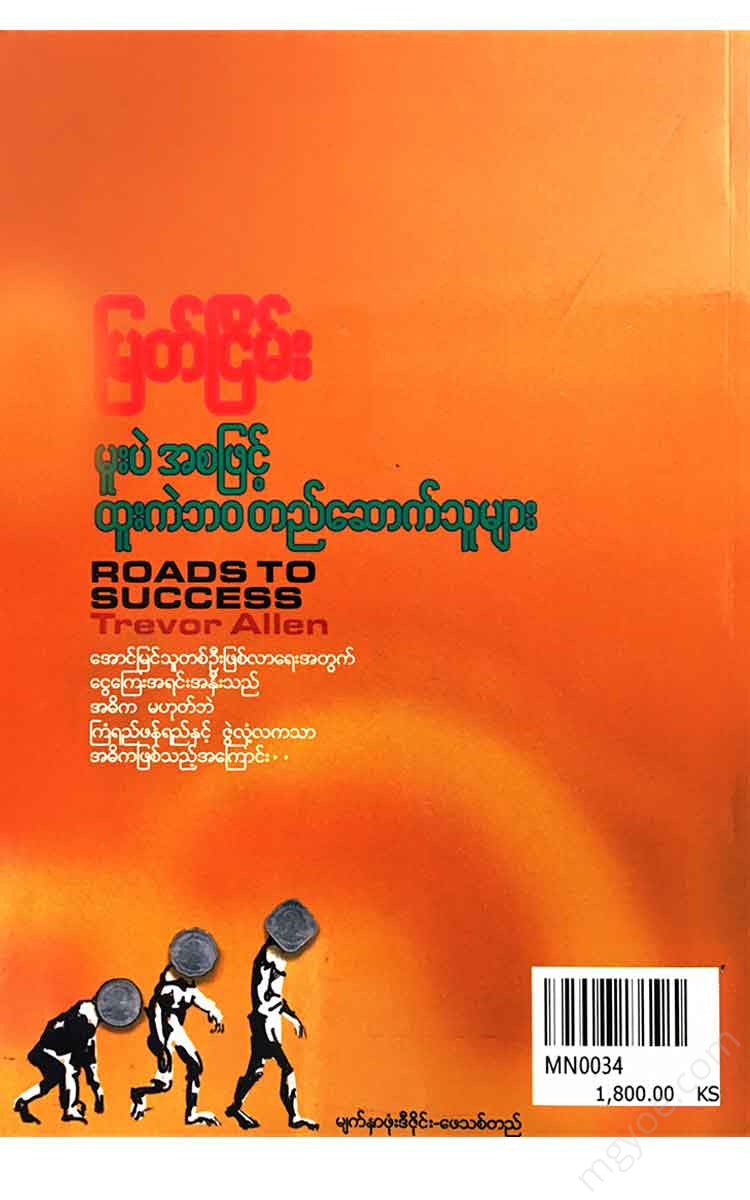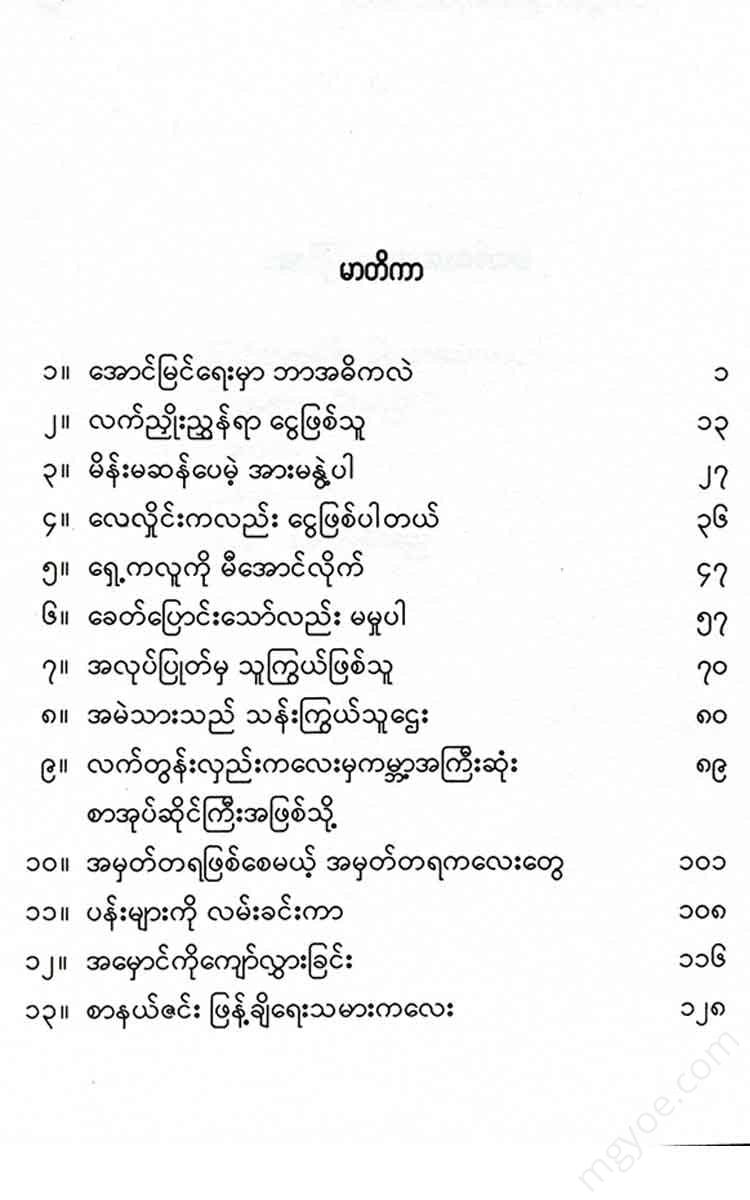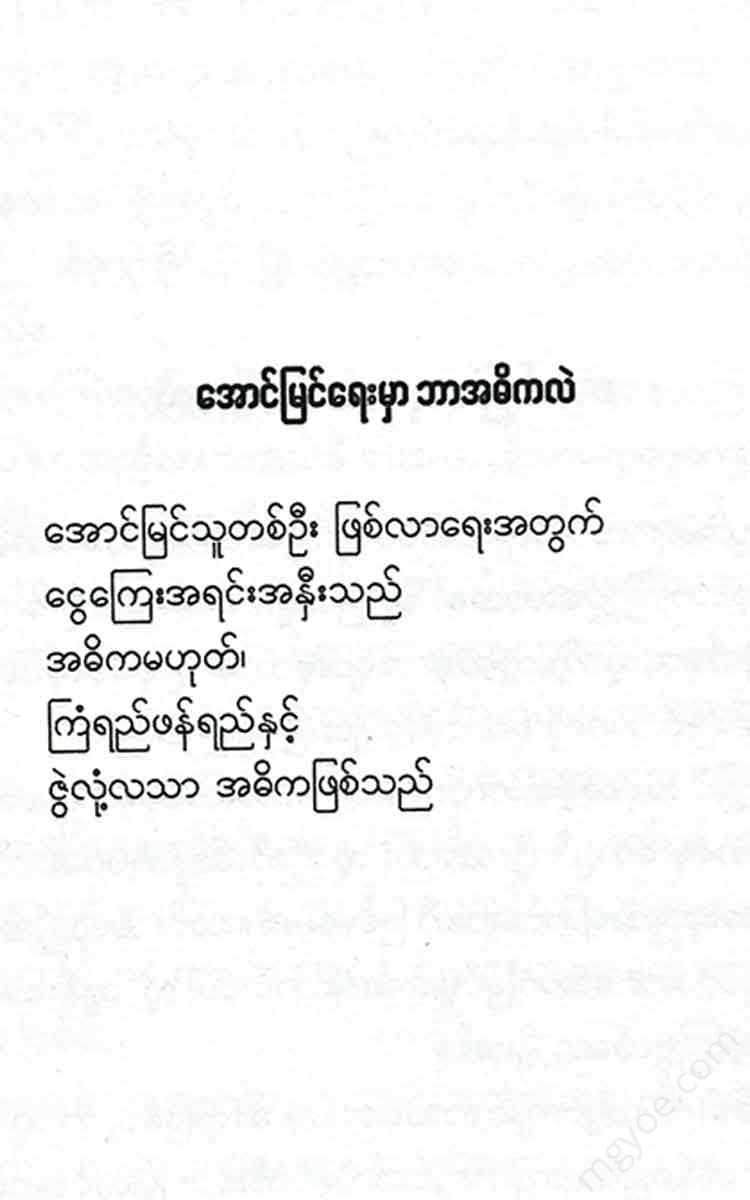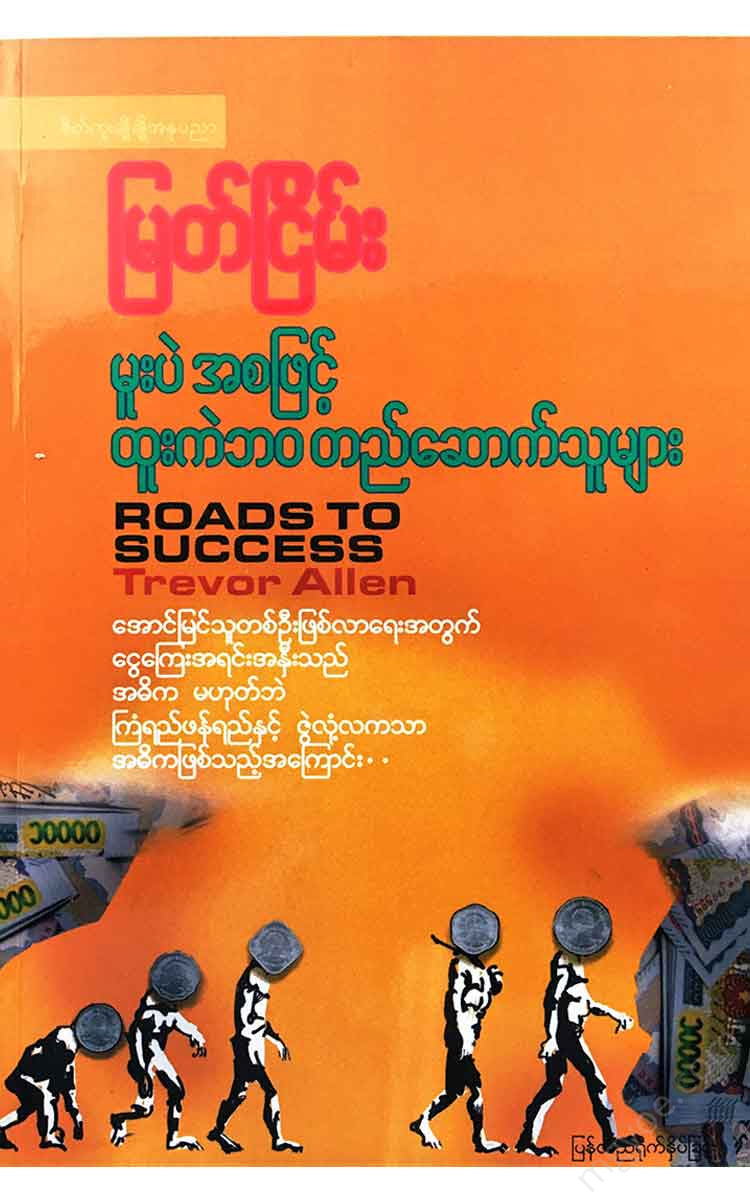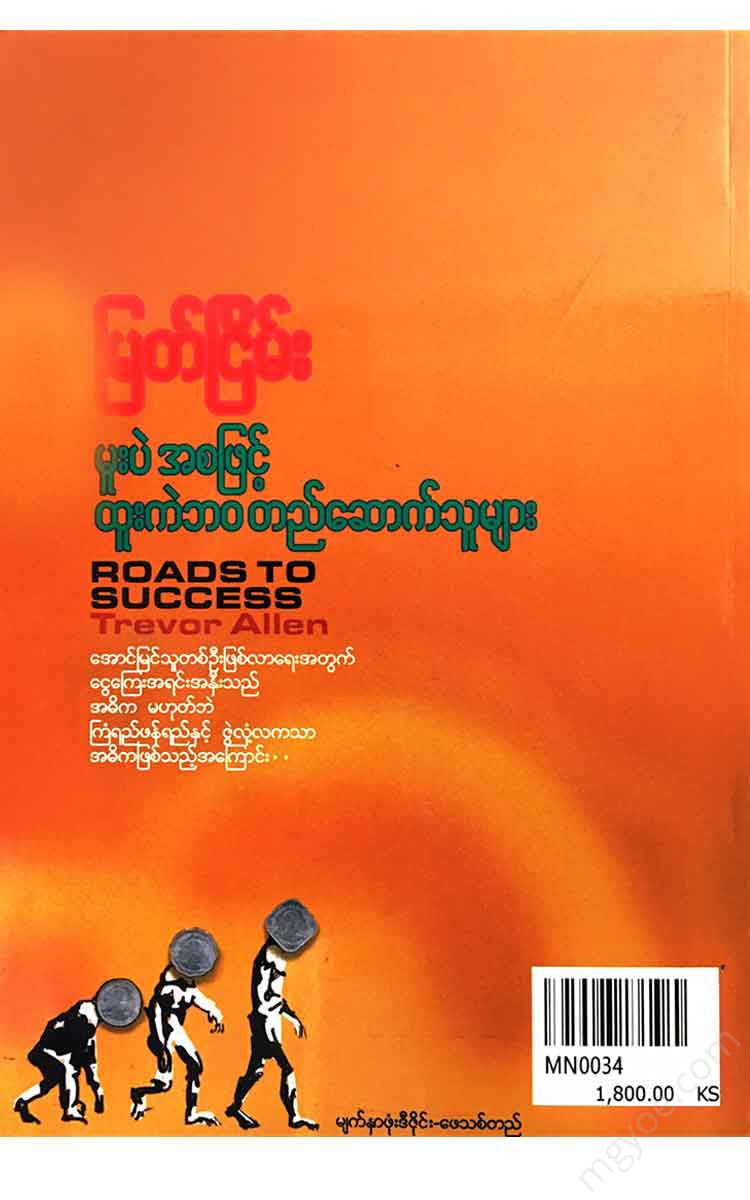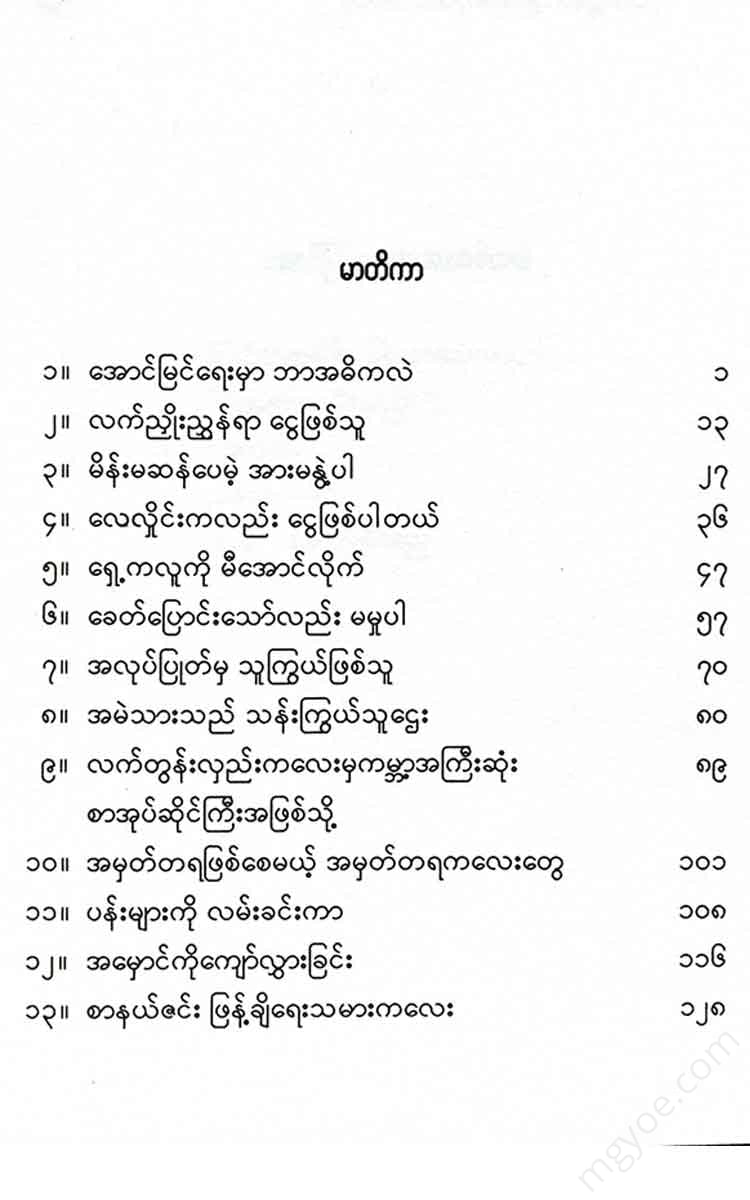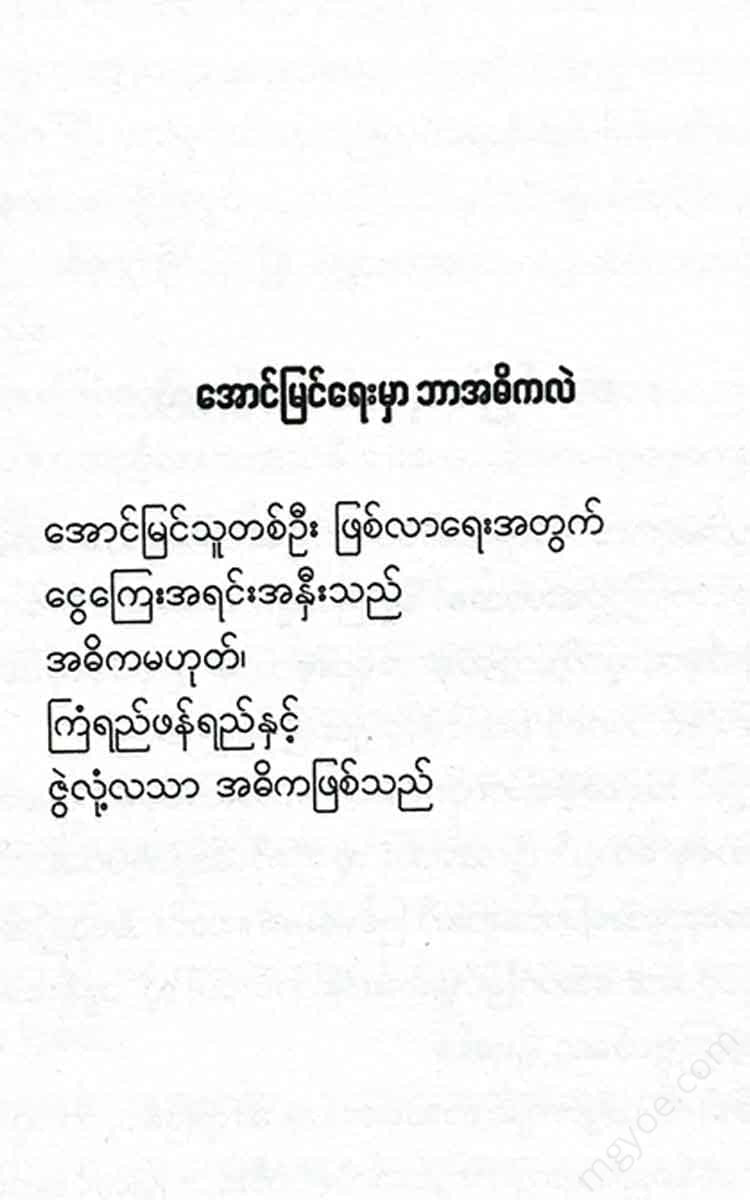စိတ်ကူးချိုချိုစာပေ
Myat Nyein - Those who build extraordinary lives from scratch
Myat Nyein - Those who build extraordinary lives from scratch
Couldn't load pickup availability
What is the key to success?
When we study the people who have reached the top of the business world, we find one thing that stands out: the fact that most of them started their lives as small businesses.
Moreover, a single word spoken without meaning to, a chance encounter with, or a series of events that have caused life changes that they themselves are unaware of, have surprisingly led them to success.
Once, a Bible teacher suggested to two of his students that they make a living by selling piggy banks at the market. One of the students said, “Yes.” The other said, “No.”
The man who said, “Yes,” had no experience with spinning wheels. He had sold newspapers. He had worked as an assistant to the owner of a grocery store. However, he took to heart a word his teacher had inadvertently said and set out to make and sell spinning wheels. In time, he owned a large company that manufactured various spinning wheels and rose to the top of the business world.
Australian-born Macpherson Robertson has been helping his mother raise five children since he was nine years old. He gets up at 3 a.m. He can't afford the cost of transportation, so he walks three and a half miles to work. He leaves work at 7:30 a.m. He delivers newspapers on the way home. He gets home at 8:30. Then he goes to school.
After leaving school, he worked as an assistant at his employer's barber shop from 6pm to 10pm. His wages were 2 shillings a week (about 34 kyats at today's prices).
He left school at the age of ten. He worked in various jobs. He also worked for a confectionery manufacturer. He liked the job. He was interested in it. So he worked for another confectionery owner for five years, gaining experience and knowledge in the business.
At the age of 20, he started his own business. His factory was a bathroom in his house. His equipment consisted of a cast iron box worth nine kyats at today’s market price, a metal cup worth five kyats, and 20 small molds made of plaster. His raw material was only a few pounds of sugar. He made sugar dolls with this sugar. He made dolls four days a week. On the other two days, he put his sugar dolls on a large tray and sold them on his head. His mother would sit up until midnight decorating the sugar dolls. On the first day of sale, he made a profit of about 34 kyats. Forty years later, his factory’s annual operating income was over 68 million kyats. He employed more than 2,500 workers, and the wages paid to them were over 1.7 million kyats a year.
By then, he had already been awarded the title of "Sir", making him "Sir Peter Robertson". He donated 3.4 million kyats to the prize money for an air race held in Melbourne, Australia, to celebrate its centenary.
He later recalled that he used to watch sugar syrup boiling in an old bathroom in Melbourne and imagine in his mind's eye the giant factories he would one day own. He was a dreamer. He believed in dreams. Because dreams, he said, showed him where he was going and showed him the path he should take.
However, if you want to be successful, you have to work harder than others. He said that he knew that while his friends were having fun, he had to work hard. Success is something that is hard to come by. Therefore, he will work hard with relentless perseverance to achieve success. He also revealed that the secret of his success is that he must always innovate his business to beat his competitors. He is a hard worker when it comes to business. Therefore, he pointed out that he can take on anyone’s position if the situation arises.
Many of the founders of the English automobile industry were self-reliant and self-taught. William Richard Morris was one of them.
Morris was born and raised in a small village in Oxfordshire. But at the age of 16, he famously declared, "Nobody can pay me better than William Richard Morris, so I'll work for William Richard Morris."
So he opened a bicycle repair shop in Oxford with about 1,400 kyats. He then assembled and manufactured his own bicycles. The bicycles he made were rented by college students for a fee. He entered them in cycling competitions all over the country to prove that his bikes were good.
Then he planned to expand his business step by step from bicycles to motorcycles, and from motorcycles to automobiles. He studied the models of vehicles that came to him for inspection and repair. He examined them. Then he planned to manufacture vehicles himself. He received orders for 400 of the first cars he would produce. So he converted the old dilapidated school where his father had studied as a child into a factory and produced his first cars. Then Morris planned to produce cars worth fifty-six thousand kyats so that everyone could ride his cars.
After the First World War, his Morris cars became a national sensation. His factory produced 150,000 cars a year and employed tens of thousands of workers.
When he became a millionaire and began to live a life where money was no longer a priority, Morris gave generously to charities. He established foundations for meaningful causes and brought happiness to others. Yet he continued to work. Because work is a natural activity for everyone, and he believed that “the time spent working hard is the happiest time for a person.”
Henry Royce, the inventor of the world-famous Rolls-Royce engine, also started his life as a newspaper boy. He then worked as an apprentice engineer for the Great Northern Railway Company. When he was 21 years old , he started his own business with about 34,000 kyats. He made and sold carbon-based lamps. During this time, he bought a foreign car. He was fascinated by it. And his heart was filled with desire. He kept on working on that engine day after day. One day, he could not hold back any longer and exclaimed, “I can build a better engine than this one.”
Soon he had renovated an old dilapidated factory and was starting to produce 10-horsepower engines of his own design. Then Rolls, a very talented engineer, joined him. And they formed a partnership. From that moment on, the world-famous Rolls-Joyce engine company began to emerge.
At that time, Royce was known as the “man with a hammer.” He would go around the factory every day to inspect and inspect. He would always come back with a hammer in his hand. If an engine built in his factory did not meet the standards he had set, he would smash it with his hand. Royce was a meticulous and precise man.
Among those who made a name for themselves through drunkenness was a man named “Kan Min.” He started out as a newspaper vendor. One day, he had an idea to sell more newspapers. He took a clothesline and tied a bag of clothes to the top of the line. There was also a small pocket for putting coins in the bag. He then put newspapers in the bag and sold them at bus stops so that passengers on double- and triple-decker buses could easily buy newspapers. In this way, his newspaper sales tripled.
With the little money he had saved, he rented a small stall outside the railway station and sold newspapers and books. As a next step, he rented a shop in the main station and opened a newsagent's shop. He then printed a monthly newsletter from the back of the shop. The 20-page newsletter, which resembled a township magazine, became popular and thousands of copies were printed. Thus, the poor newsagent became a popular newspaper publisher.
When he was 15 years old, he was introduced to Tipo O'Connor, the editor of the Sun newspaper. Tipo told him, "My publisher says you are the best newsboy in London. I have a plan to take you under my wing and train you to become a journalist."
Then the king replied, “No, thank you, sir. I want to make my own way, as I am doing now.” He later owned the newspaper “Maxwell Hill Chronicle.”
I carefully studied their background. Then, their path to success was paved by their
